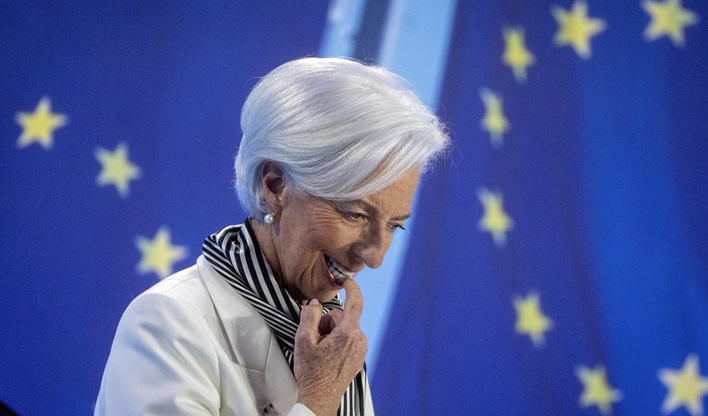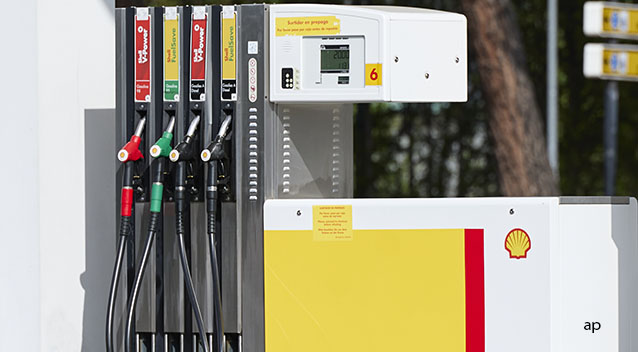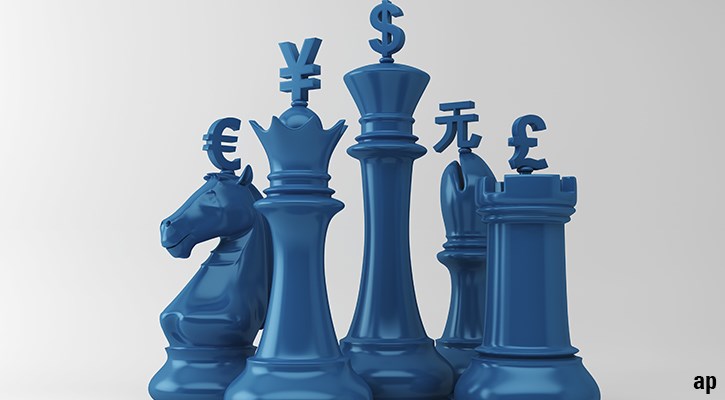
The European Central Bank cut its the key deposit facility rate by 0.25 percentage points to 3.25% on Thursday, noting progress in fighting inflation amid muted economic data for the eurozone.
It is the second cut in a row after September’s move. The already-high probability of this latest rate cut had jumped even higher on Thursday morning, after the final eurozone inflation figure came in lower than estimated.
The data showed the headline inflation rate in September at 1.7%, down from 2.2% in August, and slightly below Eurostat's own flash estimate of 1.8%. Core inflation, which strips out volatile energy and food costs, was slightly down at 2.7% from 2.8% in August. "The incoming information on inflation shows that the disinflationary process is well on track," the ECB noted in its statement.
Still, it amended its language on future inflation, suggesting that after an increase during the remainder of this year, inflation could decline to the ECB's 2% goal sooner than it had projected in September. Instead of forecasting this to happen "over the second half of next year", Thursday's statement contained the wording "in the course of next year."
Morningstar market strategist Michael Field commented that "at this stage the risk of the economy overheating because of further rate cuts appears low."
"Of course, the ECB wants to tread carefully and allow interest rates to find the right level, but the direction of travel from here is clear. With economists expecting ECB rates to fall to 2.5% over the next 12 months, we should anticipate as much. "
This is the ECB's third rate cut from its 4% rate peak, following moves in June and again at its last meeting in September. It's the first move outside a staff projection meeting.
Changes to the ECB's Key Interest Rates
As of Oct. 23, the three ECB key interest rates will stand at:
• Main refinancing rate: 3.40%, down by 0.25 percentage points from 3.65%
• Interest rate for the marginal lending facility: 3.65%, down by 0.25 percentage points from 3.90%
• Deposit facility rate: 3.25%, down from 3.50%
At present, the most important rate is the interest rate on the deposit facility, which defines the interest banks receive for depositing money with the central bank overnight. It is also the most important interest rate for savers as it has a direct impact on savings or checking accounts that accrue interest.
Market Reaction to ECB Rate Changes
While European stocks remained broadly unchanged, the euro turned negative against the dollar after the announcement.
A further interest rate cut in December is also considered a done deal among 90% of economists polled by Reuters on Oct. 8, and money markets are pricing in reductions of 25 basis points for December.
In September, only 12% of economists polled by Reuters had predicted an October cut, but most changed their views to predict cuts in both October and December after September inflation data and dovish comments from Governing Council members, including ECB President Christine Lagarde.
Why Is ECB Picking-Up the Speed of Rate Cuts?
“ECB officials largely acknowledged that downside risks to growth were starting to materialize, in particular following the flash PMI miss on September 23,” said Goldman Sachs in a note before the meeting.
“Lagarde and executive board member Schnabel stated that the economy's recovery was ‘facing headwinds’ which ‘[could not be] ignored’.”
Michael Krautzberger, global CIO fixed income at AllianzGI, thinks that “this pick-up in the speed of rate cuts is justified as the mix of sub-trend euro growth and at-target inflation argues for a much less restrictive monetary policy than is currently the case”.
“There are some hopes that recent Chinese policy support will help trade-sensitive markets like Germany, but we doubt this will be enough to offset the weak domestic demand picture within the region. There is also a risk that after the upcoming US elections in November, trade conflicts may return to the policy agenda – not just between the US and China, but also with the EU – presenting further downside growth risks,” he said in a note on October 15.
All Eyes on December ECB Projections
No new forecasts for inflation or growth were planned for this meeting. In its latest inflation outlook last month, the Bank forecasted headline inflation at an average 2.5% in 2024, 2.2% in 2025 and 1.9% in 2026, as in the June projections. Core inflation forecasts were revised up slightly from June, but ECB staff continued to expect a rapid decline in core figures from 2.9% this year to 2.3% in 2025 and 2.0% in 2026.
As for the economy, the ECB last projected 0.8% growth in 2024, rising to 1.3% in 2025 and 1.5% in 2026. This was a slight downward revision on June's projections of 0.9%, 1.4% and 1.6%, mainly owing to a weaker contribution from domestic demand over the next few quarters.
New macroeconomic projections will be published in December.
How Far Will Eurozone Interest Rates Fall?
Markets are pricing in reductions of 25 basis points for December, but the future path is more uncertain.
According to Tomasz Wieladek, chief european economist at T. Rowe Price, the ECB will likely cut in the next couple of meetings, but he added that “the tails around ECB monetary policy outcomes are particularly fat at the moment and depend on developments in China and the US.”
Bond markets are already anticipating one rate cut at each ECB meeting until April 2025. “The market expects the deposit facility to ’land’ at 2% during the summer of 2025,” said Kevin Thozet, member of the Carmignac investment committee before the meeting. “Such an expectation seems fair given the current environment. But what happens next, as always, is open to debate.”
Kaspar Hense, Senior Portfolio Manager at RBC BlueBay Asset Management, says the ECB isn't in a rush, with the real risks being political. A Trump victory could force the ECB to keep the currency weak. But until the inauguration in January, "it most likely be steady as it goes", with a 25bps reduction every meeting bringing rates to neutral in summer 2025.


























